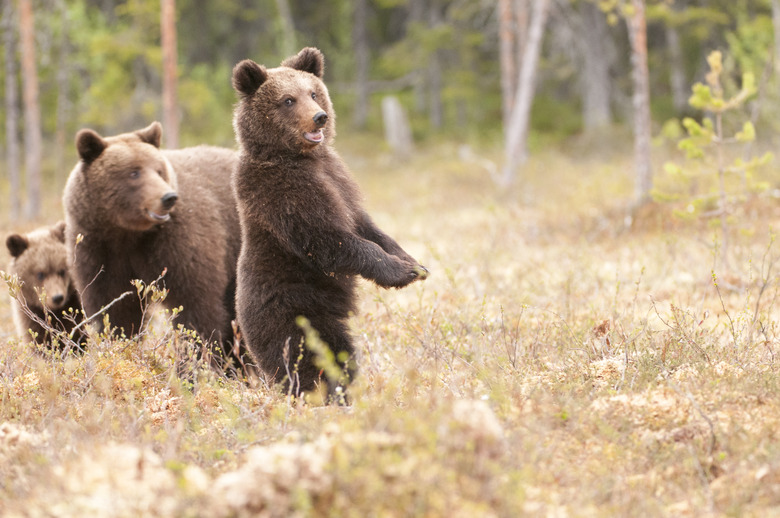How To Measure A Bear's Weight From Its Foot Size
Although zookeepers may have the equipment and controlled circumstances needed to weigh a bear, in the wild you generally need to rely on estimates of weight. You can make a reasonable estimate by looking at the size of its footprints or tracks. The size of a bear's paws, and the size of the prints it leaves, allows you to make a rough estimate of the bear's size, maturity and likely weight. While in bear country, take precautions to avoid provoking a bear into attacking. Be particularly careful when mother bears are with young cubs.
Step 1
Measure the bear's footprint by laying your tape measure or ruler to the side of the print. Write down the length of the footprint at its longest part, from heel to toe. Also, measure the width of the print.
Step 2
Compare the length and width measurements. If the length and width are similar, it is likely a footprint from a bear's front paw. If the print is longer than it is wide, it is more likely a back paw print.
Step 3
Find out what type of bears live in the environment where you found the print. Black bears, for example, live in California and Vermont. Brown bears live in Alaska and other locations throughout North America, Europe and Asia.
Step 4
Compare the size of the footprint to the usual weight range of a black or brown bear. For a black bear, a front paw print 5 inches long is average, equating to an average weight of between 150 and 175 lbs. A 7-inch front print is from a bigger bear — 300 to 400 lbs. for a black bear. An average weight for a male brown bear is 500 lbs., with a large male bear weighing up to 800 lbs. Brown bear front tracks are between 6 and 8 inches long — a 6- to 7-inch front track would likely represent a 400 to 500-lb. bear, while an 8-inch front track would indicate a 700 to 800-lb. animal. Brown bear rear tracks are 12 to 16 inch long, with 16-inch tracks representing the heavier bears.
TL;DR (Too Long; Didn't Read)
A heavy bear may leave a relatively small paw print in hard ground, leading you to underestimate its weight.
Cite This Article
MLA
Allen, Jae. "How To Measure A Bear's Weight From Its Foot Size" sciencing.com, https://www.sciencing.com/measure-bears-weight-its-foot-size-10069146/. 29 April 2018.
APA
Allen, Jae. (2018, April 29). How To Measure A Bear's Weight From Its Foot Size. sciencing.com. Retrieved from https://www.sciencing.com/measure-bears-weight-its-foot-size-10069146/
Chicago
Allen, Jae. How To Measure A Bear's Weight From Its Foot Size last modified March 24, 2022. https://www.sciencing.com/measure-bears-weight-its-foot-size-10069146/
